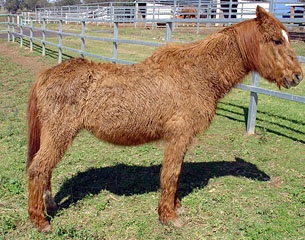
"Talk About Laminitis" is a national initiative provided by Boehringer Ingelheim Vetmedica, to improve awareness and understanding of the underlying endocrine causes of laminitis. The company offers UK horse owners free ACTH Blood Tests to diagnose Cushing’s Disease (PPID).
From 30th August to the 30th November the laboratory fees for the ACTH blood test to detect Cushing’s disease, will be free of charge to help assist early identification of laminitis prone horses and ponies. See voucher here.
Hormonal disorders are responsible for 90% of laminitis cases
Equine Cushing’s disease (PPID) and Equine Metabolic Syndrome (EMS) are the two most common hormone or “endocrine” disorders of horses and ponies. Recent advances in our understanding of laminitis has changed our approach to the diagnosis and treatment of the problem. Evidence now suggests that 9 out of 10 horses and ponies with laminitis have an endocrine disease (PPID or EMS) at the root of the problem and despite the common perception that Cushing’s disease is solely a condition of older horses and ponies, new data shows that up to one-third of laminitic 10- to 15-year-olds may be affected.
Cushing’s disease can be easily diagnosed by a blood test taken by your veterinary surgeon, and autumn is the best time for the test for Cushing’s as this is when there is a greater difference between horses with Cushing’s and those free of the disease. If your horse or pony is within the 90% that do have an underlying hormonal disease, then it’s essential to reach the correct diagnosis in order to be able to treat the laminitis appropriately and plan to prevent future painful episodes.
Grass & Laminitis
Over three-quarters of horse owners believe that laminitis is most commonly caused by access to lush pasture, especially if the horse or pony is overweight. However, new research shows that this grass-focussed thinking may be too simplistic in as many as 90% of laminitis cases.
In the past, research into the cause of laminitis focused on the role of simple sugars (fructans) in lush grass. It was proposed that eating excessive amounts of fructans could disrupt fermentation in the hindgut, resulting in laminitis. However recent research evaluating grass intake in grazing horses and ponies has shed doubt on this theory5. The average daily consumption of fructans in grazing horses and ponies is considerably lower than the levels required to cause laminitis experimentally
Instead, when horses and ponies with an underlying hormonal disease graze and ingest soluble carbohydrates such as fructans, it causes an abnormally high levels of a hormone called insulin.
Insulin is a hormone responsible for moving carbohydrates from the blood into the tissues. There is very good evidence that high levels of circulating insulin results in laminitis in horses and ponies with PPID and/or EMS. In normal horses, without an underlying hormonal disease, grazing pasture is unlikely to cause laminitis.
More info at www.talkaboutlaminitis.co.uk